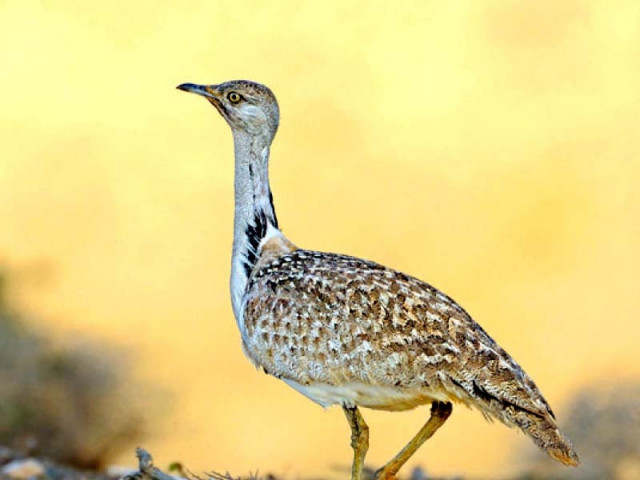New survey to help monitor bustard population
Latest drone cameras will also be used to monitor birds

PHOTO: FILE
In a survey, conducted five years ago, it was revealed that the number of the great Indian bustard was 150. Now, in the current survey, the latest drone cameras will also be used to monitor the population of the bird. The great Indian bustard is a rare bird and is found in the Cholistan desert of Pakistan and Rajasthan in India.
Punjab Wildlife Director General Sohail Ashraf said effective steps were being taken to save this rare species.
“The efforts of the Punjab Wildlife and other NGOs have helped increase the number of Great Indian Bustard in the Cholistan. Our effort is to find endangered animals and birds as were the rare-breed vultures," Ashraf said.
Such birds will be breeding in an artificial environment and left in the wild after a considerable number of them will be ready.
He said the latest drone cameras would be used during the survey.
“This will help estimate the actual number of birds. Punjab Game Warden Badar Munir said the Houbara Foundation and the WWF surveyed various areas of the Cholistan Desert in Bahawalpur and Bahawalnagar. He said a documentary was being shot on the life of bustards.
The wildlife experts call the great Indian bustard as 'Bhakkar' and the king of grassland. This bird is a rare species worldwide and is only found in the desert areas of Pakistan and India Cholistan and Rajasthan.
India has a greater area of bustards than Pakistan including Gujarat, Madhya Pradesh, occupied Jammu and Kashmir, Karnataka, Andhra Pradesh and West Rajasthan.
Experts say the number of birds is declining rapidly due to deforestation, increasing population, hunting, crops and spray of pesticides on the fields. The experts also stressed the need for preserving the natural habitat of the bird.
Published in The Express Tribune, September 21st, 2019.


















COMMENTS
Comments are moderated and generally will be posted if they are on-topic and not abusive.
For more information, please see our Comments FAQ